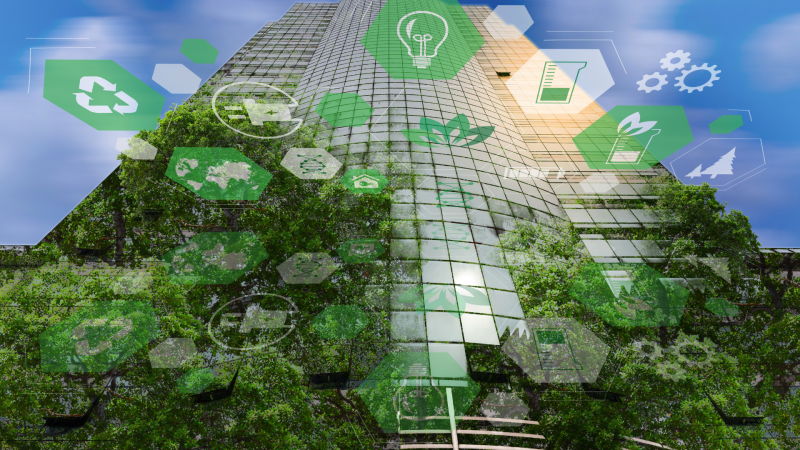Achieving The Net-Zero Future

Categories :
Australia's transition from a fossil fuel energy sector to a net-zero future will be expedited by a government agency, the Net Zero Authority, in a bid to achieve net-zero emissions by 2050. The Australian government follows steps from countries like the United Kingdom, Canada, Germany and even supranational organisations like the European Union. But what do the Net Zero Authority and other institutions need to do to really achieve a Net Zero Future?
Carbon neutrality also referred to as net zero emissions or carbon neutrality, means achieving a balance between the amount of greenhouse gas (GHG) emissions released into the atmosphere and the amount of emissions removed or offset. It is the state where the net emissions of carbon dioxide (CO2) and other GHGs are effectively cancelled out, resulting in no net increase in atmospheric GHG concentrations.
The Paris Agreement Lays Out The Foundation for a Net-Zero Future
To understand the concept of carbon neutrality, we need to take a closer look at the Paris Agreement. The Paris Agreement is an international treaty adopted in 2015 under the United Nations Framework Convention on Climate Change (UNFCCC). It was signed by 195 Parties (194 countries plus the European Union). The agreement aims to combat climate change and limit global temperature rise well below 2 degrees Celsius above pre-industrial levels while pursuing efforts to limit the temperature increase to 1.5 degrees Celsius.
“Today the American people can be proud because this historic agreement is a tribute to American leadership. Over the past seven years, we’ve transformed the United States into the global leader in fighting climate change. This agreement represents the best chance we have to save the one planet that we’ve got."
He also said that no agreement is perfect, including this one.
"Even if all the initial targets set in Paris are met, we’ll only be part of the way there when it comes to reducing carbon from the atmosphere”, Former US President Barack Obama said about the Agreement.
The Paris Agreement recognizes the importance of achieving global carbon neutrality in the second half of the 21st century. The specific language related to carbon neutrality is found in Article 4 of the agreement.
In Article 4, it is stated that:
“In order to achieve the long-term temperature goal set out in Article 2, Parties aim to reach global peaking of greenhouse gas emissions as soon as possible, recognizing that peaking will take longer for developing country Parties, and to undertake rapid reductions thereafter in accordance with best available science, so as to achieve a balance between anthropogenic emissions by sources and removals by sinks of greenhouse gases in the second half of this century, on the basis of equity, and in the context of sustainable development and efforts to eradicate poverty.”
Collaboration Between Businesses And Governments For a Net-Zero Future
In a net-zero future, government projects would prioritize sustainability and aim to minimize or offset their greenhouse gas emissions. To achieve this, governments, organizations, businesses and individuals need to work together through different initiatives and projects that aim to change our current cultural paradigm and, most importantly, our way of how we do business and live.
Here are a few examples of what government projects that governments and businesses are working on:
Renewable Energy Infrastructure
Governments need to invest heavily in the development and expansion of renewable energy sources such as solar, wind, hydro, and geothermal power. This could involve the construction of solar and wind farms, the installation of offshore wind turbines, and the improvement of transmission and distribution networks to support clean energy integration.
For example, Denmark is a leader in offshore wind energy. The country has implemented large-scale offshore wind farms, such as the Horns Rev and Kriegers Flak projects, operated by businesses like Orsted. These projects harness the strong winds in the North Sea and Baltic Sea to generate a significant amount of clean electricity.
Other mega projects include Geothermal Power Plants in Iceland and Concentrated Solar Power (CSP) Plants in the USA. In fact, The United States has several concentrated solar power plants, including the Ivanpah Solar Power Facility in California. These plants use mirrors or lenses to concentrate sunlight and generate thermal energy, which is then converted into electricity.
Energy Efficiency Upgrades
Governments around the world are implementing initiatives to enhance energy efficiency in buildings, transportation, and industrial sectors. This could include retrofitting public buildings with energy-efficient technologies, promoting electric vehicles and charging infrastructure, and incentivizing industries to adopt clean and energy-efficient processes.
Germany has implemented extensive building retrofit programs to improve energy efficiency. These projects involve upgrading insulation, windows, and heating systems in residential and commercial buildings. Programs such as KfW's Energy Efficiency Program provide financial incentives and support for building owners to undertake energy-saving renovations.
In Japan, the country has implemented smart grid technologies and demand response initiatives to enhance energy efficiency. Projects like the Fukushima Microgrid Demonstration Project focus on integrating renewable energy sources, energy storage systems, and smart grid management to optimize energy usage and reduce overall consumption.
Sustainable Transportation
Governments do now prioritize the development of sustainable transportation systems. This might involve expanding public transportation networks, investing in electric or hydrogen-powered buses and trains, and improving cycling and pedestrian infrastructure. Additionally, governments could support the adoption of zero-emission vehicles by offering incentives, expanding charging networks, and developing supportive policies.
The easiest examples of all can be found in the Netherlands. The Netherlands is renowned for its extensive cycling infrastructure. The country has developed an extensive network of dedicated bike lanes, bike parking facilities, and bike-sharing programs to encourage cycling as a sustainable mode of transportation. Cities like Amsterdam and Utrecht have prioritized cycling infrastructure, making it safe and convenient for people to choose bikes for daily commuting.
Equally important is to promote sustainable private transportation. Major cities around the world have implemented strong incentives to promote zero-emission vehicles offering tax exemptions, toll-free access, and free parking for electric vehicles.
Green Building Programs
Governments encourage businesses and developers to adopt sustainable construction practices and support the development of green buildings. This could include promoting the use of eco-friendly materials, implementing stricter energy efficiency standards for new constructions, and providing financial incentives or tax benefits to developers who incorporate sustainable design principles into their projects.
Reforestation and Conservation
Governments must invest in initiatives to preserve and restore ecosystems, including reforestation projects and the protection of biodiversity-rich areas. These efforts could involve planting trees to sequester carbon dioxide, restoring wetlands, and implementing sustainable land management practices to mitigate deforestation and land degradation.
One mega project is India's Aforestation and Watershed Management initiatives focus on increasing forest cover, improving water resources, and promoting sustainable livelihoods. Projects like the National Afforestation Program and Watershed Development Projects involve tree planting, soil conservation, and community engagement to restore degraded land.
Circular Economy Initiatives
Along with strong Research and Development programs with private institutions and national universities, governments need to promote the transition to a circular economy by implementing policies and projects that encourage resource efficiency, waste reduction, and recycling. This might involve supporting initiatives to promote the reuse of materials, investing in waste management infrastructure, and encouraging sustainable consumption patterns.
There are plenty of projects to be hopeful for. The Waste and Resources Action Programme (WRAP): The UK's WRAP program focuses on waste reduction and resource efficiency. It includes initiatives such as Love Food Hate Waste, which promotes food waste reduction and smarter consumption, and the Plastics Pact, which aims to eliminate unnecessary single-use plastics. These projects encourage behaviour change and collaboration across industries to create a more circular economy.
South Korea's Green Growth Strategy includes circular economy principles to drive sustainable development. The strategy focuses on resource efficiency, waste reduction, and the development of eco-industrial parks. These parks encourage the co-location of businesses, waste exchange, and the efficient use of resources to minimize waste and emissions.
The Paris Agreement set out a comprehensive framework for global climate action, with major action plans focused on mitigation, adaptation, finance, technology, transparency, and accountability. It encourages countries to continually enhance their efforts, foster international cooperation, and strive for a sustainable and resilient future.
By collectively implementing these plans, and with a strong collaboration with businesses and organisations, countries aim to address climate change effectively and limit its adverse impacts on the planet and humanity.

Hernaldo Turrillo is a writer and author specialised in innovation, AI, DLT, SMEs, trading, investing and new trends in technology and business. He has been working for ztudium group since 2017. He is the editor of openbusinesscouncil.org, tradersdna.com, hedgethink.com, and writes regularly for intelligenthq.com, socialmediacouncil.eu. Hernaldo was born in Spain and finally settled in London, United Kingdom, after a few years of personal growth. Hernaldo finished his Journalism bachelor degree in the University of Seville, Spain, and began working as reporter in the newspaper, Europa Sur, writing about Politics and Society. He also worked as community manager and marketing advisor in Los Barrios, Spain. Innovation, technology, politics and economy are his main interests, with special focus on new trends and ethical projects. He enjoys finding himself getting lost in words, explaining what he understands from the world and helping others. Besides a journalist, he is also a thinker and proactive in digital transformation strategies. Knowledge and ideas have no limits.









